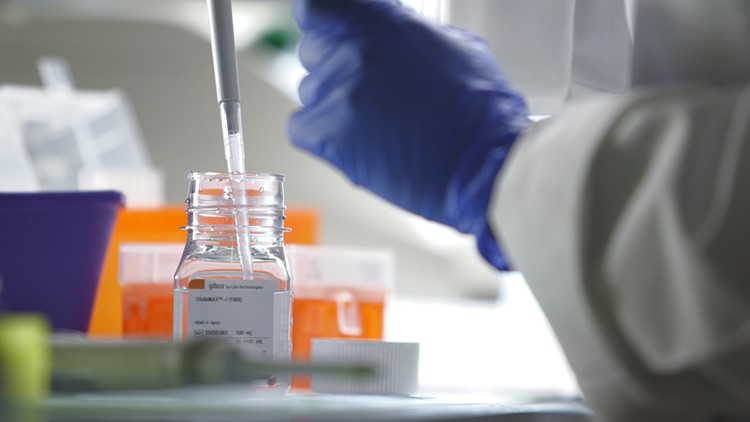Researchers and doctors are constantly challenging accepted thinking and taking risks to move meaningful medical breakthroughs forward faster. Nowhere is this more prevalent than in cancer research, where challenging the norm is the norm.
Sometimes concepts aren’t necessarily novel, but they become groundbreaking when they are applied and integrated in new ways. Take the concept of donating your organs to research after you die.Donating your organs so that someone else might live isn’t new. And choosing to be an organ donor is pretty simple; individuals can check a box when they renew their driver’s licenses.
When it comes to cancer research, however, organ donation is not widely practiced. But that is changing. In June 2016, experts at The Ohio State University Comprehensive Cancer Center – Arthur G. James Cancer Hospital and Richard J. Solove Research Institute (OSUCCC – James) launched a study called Body Donation for Cancer Research. The goal is to investigate how cancers become resistant to treatment.
The study is funded by Pelotonia, an annual grassroots bicycling event that raises money for cancer research at the OSUCCC – James.
Ohio State is one of the few universities conducting body donation studies for cancer, says Sameek Roychowdhury, MD, PhD, assistant professor of medical oncology, who is heading up the local team at the OSUCCC – James, where the study includes all types of advanced-stage cancers.
“We learn something new from each patient,” says Roychowdhury, citing two examples: learning why a cancer became resistant to treatment, and finding out how a cancer became metastatic and escaped to grow in other parts of a patient’s body.
“When a cancer moves from one area of the body to another, it’s the same cancer, but there are subtle differences to it—it evolves and changes,” Roychowdhury says.
Some biopsies can be conducted on cancerous tumors while a patient is living, but it’s not always feasible, which is why body donation becomes essential. Sometimes performing a biopsy is impossible or would be detrimental to a patient. “We can’t ask a patient to do this because it’s too risky,” he says.
So why isn’t body donation in cancer research more common?
“Asking someone who has terminal cancer to donate their body to research can be a sensitive subject,” Roychowdhury says, adding that, even if patients are willing, their loved ones and family members might not be keen on the idea. “There is no risk or cost involved, but it has to be done in a respectful way.”
So far, Roychowdhury’s team has completed 17 autopsies, and another seven patients have enrolled. His hope is that body donation becomes more widely used so that doctors and researchers can continue to learn and apply their new knowledge to helping others who are battling the disease.
Keith Beck was 59 when he died of bile duct cancer that had spread to his liver. His ex-wife, Nancy, who remained a close friend, recalls that he wanted to find a way for his disease to help others. Keith didn’t hesitate when asked if he would consider donating his body after death for cancer research.
“It was a very hard decision to accept as a loved one, but it felt like the right one and it was what he wanted,” says Nancy, who helped care for Keith during his last year of life alongside Keith’s girlfriend, Jackie. “He said, ‘If I’m not going to make it, someone else may have a chance because of what I did. If I can, I want to make sure I help someone else.”
An active father, avid golfer and full-time professor, Keith enjoyed a good quality of life while receiving treatment on a clinical trial for about a year. Unfortunately, his disease progressed and he passed away suddenly.
This, says Roychowdhury, is another reason body donation is not more widely practiced: It requires organizing a team of experts with specialized backgrounds in a short time to perform a rapid autopsy. It’s called rapid autopsy because it’s done as quickly as possible to preserve body tissue.
“Without blood flow, the tissue deteriorates. It’s much like a surgery and can be done in as little as two hours. We know beforehand exactly where the cancer is, and we take tissues out at the site of disease. Importantly, patients and families can still have an opencasket funeral,” says Roychowdhury.
“At the time of death, I can get a call any time of the day or night, and then I activate the team,” he says.
The person could be anywhere in Ohio. After allowing the family and loved ones to say their goodbyes, the team sets the plan in motion.
“Collaboration is the name of the game,” Roychowdhury says. “Performing the autopsy isn’t hard, but getting everyone aligned to a game plan is critical. We need one goal.”
The body donation team at the OSUCCC – James consists of scientists, clinical oncologists, data analytics experts, biologists, pathologists and a host of others, each of whom performs a specific task.
World Cancer Day is celebrated each year on Feb. 4. It’s a day when people from around the world are united in their effort to raise awareness about the disease and how to fight it. Without innovative thinking, advancements in treating cancer would not be possible.
For Roychowdhury, “teamwork” defines innovation.
To learn more about Roychowdhury’s research, visit cancer.osu.edu. Registration for Pelotonia 2018 opens Feb. 21. To learn more about the ride, visit pelotonia.org.



